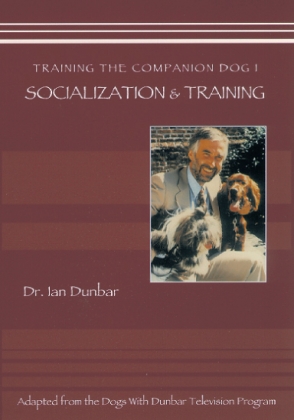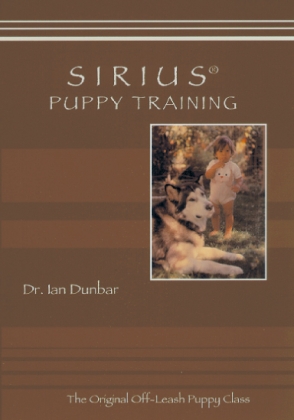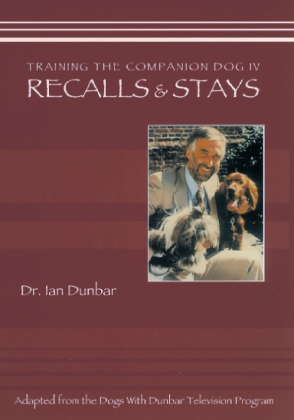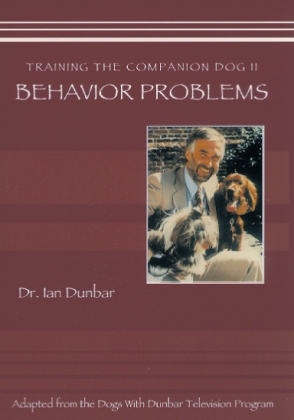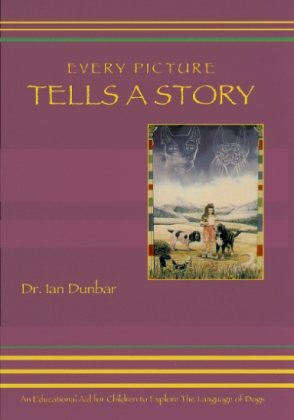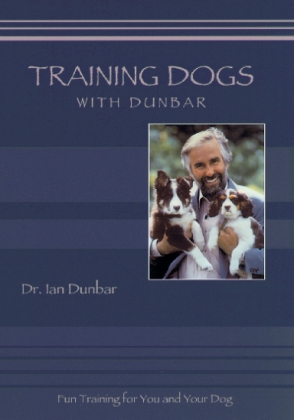Topics include: Socialization. Fearful and/or Aggressive Pups. Handling. Communication. Sit, Down & Stand.
Eugenics or Dysgenics
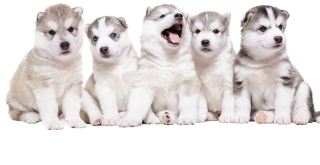
Natural Selection is nature's fail-safe method to maintain eugenics (good genes and fine offspring). All dogs are different; individual variation is an inherent characteristic of sexual reproduction. Different dogs fair differently in different situations: those dogs best suited to the immediate environment (the genetically fittest) do well; the less fit do less well; and the unfit usually die. In the wild, the process of natural selection promotes the survival of the fittest and the elimination of nature's mistakes.
Additionally, nature has a wonderful way to promote good breeding — promiscuity, fertility and fecundity. Animals that have problems mating, or whelping, simply have no genetic representation in subsequent generations. Similarly, during early domestication, there was a ruthless selective pressure for breeding ability, ease of socialization and tractability. Animals that could not, or would not, breed in captivity did not produce domestic stock, whereas good breeders passed along genes for good breeding to foster future generations of good breeders. Friendly, confident and biddable animals were kept as breeding stock, unfriendly and aggressive animals were probably eaten.
However, continuing improvements in veterinary technology and the practice of artificial selection allow breeders to mess with Mother Nature — sometimes for the better and sometimes for the worse. Nowadays, the responsibility of maintaining a healthy gene pool and preventing deleterious effects on the line and breed (i.e., dysgenics) lies predominantly with the know-how and integrity of individual breeders.
Artificial Selection
The aim of artificial selection is to improve the gene pool along prescribed yet multilateral lines. Extreme unilateral selection for a single trait, whether conformation, temperament, or working ability, is often at the expense of other characteristics. What you gain on the swings you lose on the roundabouts! When selectively breeding for specific coveted and/or beneficial traits, breeders must strive to maintain balanced and comprehensive selection criteria that ensure the general health and well-being of the breed.
Ruthless line-breeding may cause the inheritance of bad qualities as well as intended good qualities. Breeders must equate potential breed-gains such as, conformation to standard body shape, size and coat color, improved joints, improved dentition, or the elimination of breed-specific diseases/conditions, etc., with potential breed-losses such as, sensory deficiencies, physiological abnormalities, increased susceptibility to other diseases/conditions, decreased life-expectancy and ironically, a difficulty, or inability, to mate or whelp.
Best-in-Show honors tempt many breeders to breed good-looking dogs without thoroughly evaluating their genotypes. Additionally, the elusive quest for the perfect body prompts many breeders to go to great lengths, employing various artificial means, to breed known poor breeders. By so doing, they are propagating a population of good-looking dogs, which have great difficulty reproducing without veterinary assistance.
Veterinary Intervention
Veterinary science exists for the benefit of individual animals and for the betterment of the breed and species. Veterinarians frequently save the lives of individual dogs but sometimes, veterinary intervention may be detrimental for the breed as a whole. Veterinary treatment frees dogs from some of the natural selective pressures imposed by nature. In the domestic environment, many animals survive and breed that otherwise would have died, or failed to breed, in the wild. It is essential to separate the fate of individual dogs from the fate of the line and the breed. Of course, we all want to do our best to save the lives of individual dogs but it would be a disservice to the breed and species to breed some of those saved dogs that might pass on genetical defects that could promulgate the very same problems in future generations.
Survival of the Unfit?
Some pups are born with physical defects. Others have less obvious problems and turn out to be “poor doers”, or runts. The question of what to do with the runt (or runts) of the litter, or puppies with physical defects, must be individually addressed by each breeder. Eugenic options include: culling the litter, letting nature take its course, or saving but neutering the pups and maybe the parents. Also, when a bitch rejects a pup, before exercising our options, perhaps we should pay heed to her decision and immediately remove the pup from the litter, (in case the pup's problems are infectious). With two sickly litters from the same dam it would be prudent to neuter the dam.
Breeding the Unfit?
One might argue that man-made, pure-bred dogs were not meant to exist in the wild. Certainly, yes, but that does not necessarily mean that they should not be able to lead long and healthy lives and be able to reproduce themselves. The inability to mate, whelp and care for young is highly unnatural. If, for any reason, dogs can’t mate, whelp or care for their young, perhaps we shouldn’t use artificial means to breed them. If there is one behavior that nature perfected, it would be mating behavior and if that doesn’t work, well, then something is really wrong. Many characteristics in dogs affect the survival of individuals but successful sexual behavior is essential for the survival of the species.
Breeding Bitches that Cannot Whelp — Caesarean sections are becoming increasingly common, especially among large-headed/narrow-pelvic breeds and some toys. When urgent, a C-section is a serious, life-saving operation. If a breeder feels that an elective Caesarean might be necessary, why breed and subject the bitch to risk? If an emergency Caesarean has been necessary to save the life of the dam and her litter, consider spaying the bitch and neutering the offspring. If a Caesarean is necessary on a subsequent whelping, seriously consider spaying the bitch and neutering her offspring (males included) from both litters. Also, it would be wise to investigate how many other females in the line have required Caesareans.
Regardless of the breed though, there are always individual bitches that can free-whelp without the necessity of veterinary intervention. Yes, there are free-whelping Bostons and Frenchies (approximately 20%). These bitches should be an obvious inclusion in any multilateral selective breeding program.
An elective Caesarean may have profound deleterious effects on the pup's temperament and well-being. Maternal behavior is precipitated by the many hormonal changes that occur immediately prior to parturition. Performing a Caesarean more than 24 hours before the bitch is due to whelp, risks the likelihood that she will be disinterested in her offspring. Such pups have to be hand-raised and are thus deprived of the bitch's colostrum and passive immunity against diseases and they are deprived of maternal behavior, i.e., the equivalent of behavioral immunity for many adult behavior and temperament problems. Lack of maternal care is the harbinger of many dog-dog temperament problems, especially including a lack of bite inhibition in adulthood.
Breeding Bitches that Won’t Mate — Not being in true estrus is the most common reason for a bitch to refuse a suitor — either too early (proestrus), or too late (metestrus). Obviously, artificial insemination is not a viable solution because that too would occur at the wrong time (either too early or too late) to synchronize with ovulation. (See article on Determining the Precise Day of Ovulation). The second most common reason for a bitch to refuse a potential mate is that the human-selected stud is not her preferred partner.
Courtship is Nature's Temperament Test. Courtship comprises a species-specific, stereotyped choreography of behavioral interaction between potential partners. Thus, the bitch is afforded the opportunity to evaluate her prospective mate’s mastery of social intercourse prior to sexual intercourse. Successful courtship is proof that an excited male dog may “get a grip” and interact calmly and without fear or aggression. However, despite several thousand years of selection for promiscuity in domestic dogs, many bitches still remain highly selective in their choice of mating partner and from heat to heat, display resolute sexual preferences that are quite distinct from their normal social preferences. Other common reasons for a bitch to refuse a stud appear to be that the male was antisocial, asocial, or naive and/or clumsy in his advances, i.e., courtship weeds out those studs that are not sufficiently socialized (either from experiential deficiency, or inherent predisposition). When a bitch says, “No”, maybe we should listen to her. Maybe she knows something that we don’t.
There are of course, aside from the obvious, many other wonderful benefits about natural mating. Natural mating, especially a lengthy courtship, even the mere smell, sight, sound, or touch of a member of the opposite sex, stimulate the production and release of the pituitary gonadotrophic hormones, that control ovulation and the number of ova released, i.e., courtship improves fertility and fecundity.
And from my research in the 70’s, most certainly, male dogs know something that most people don't — the exact day following ovulation when the maximum number of ova are ripe and ready for fertilization! Sometimes nature still works better than science.
Breeding Fearful or Aggressive Dogs? — Why use muzzles or restraints to breed animals that are fearful or aggressive? In fact, why even consider breeding any animal that has an obvious temperament problem? Even if the problem is thought to be due to insufficient socialization, maybe the dog has an inherent predisposition to socialize slowly, as is quite common with a number of breeds, which tend to de-socialize in adolescence quicker than they socialize.
And why force unwilling females to breed? When I first saw an advertisement for The Bitch Hitch in an April issue of a most prestigious dog magazine, I assumed that it was an April Fool’s “joke” and called the Editor to caution that it was inappropriate but she confirmed that the advertisement was real! Basically, the Bitch Hitch was a solid platform with four manacles to secure the bitch’s fore and hind legs.
Breeding Unhealthy Dogs? — Over the past few decades, there have been major advances in the prevention of breed-specific diseases and conditions, which again is good, solid, commonsense but I think that we are still missing the nitty-gritty. Given that the vast majority of purebred dogs become human companions, longevity is the most important quality that people desire for their dogs and longevity is the best overall indicator of physical and behavioral health.
Breeding for Temperament?
Many breeders often say they “breed for temperament”. Always selecting for improved temperament is commonsense. However, realistically, to genetically change temperament would take at least twenty generations with vigorous culling of offspring. Moreover, most of the friendlier, 20th generation puppies, regardless of breed, would likely be piebald with curly tails and floppy ears, (as per the Silver Fox study). Since most purebred dogs still look like their breed stereotype, we know that breeding for temperament at the very best has been only a distant secondary, or tertiary, concern.
Genes from Far Too Few and Far Too Young Male Dogs Are Overrepresented in the Gene Pool of Far Too Many Lines and Breeds
Genetical change within a breed occurs mainly via male dogs. Whereas a bitch's genes are passed along to little more than a score or two of pups in her entire reproductive career, a stud's genes may be passed to forty pups in just one afternoon! Whereas quantity may be the prevailing sexual strategy for males of many species, over-breeding of a small number of young male dogs is extremely deleterious for both the breed and the species, especially when the policing powers of natural selection have been removed.
When a small number of male dogs flood the gene pool with their desirable genes, they also flood the gene pool with their undesirable genes — recessive (not obvious), partially dominant (obvious) and dominant (blatantly obvious). But WHY would anyone breed a male dog with known undesirable genes? Most probably, because they DON’T know that their dogs have undesirable genes because the dogs are bred much too young and way before the genotypes have become phenotypically apparent.
Bitches need to be bred when they are mature, yet still young, generally between two and five years of age. (Repetitive heat cycles without pregnancy increase the likelihood of pyometra.) Male dogs though, need not, and should not, be bred when young because their genotype has yet to be adequately evaluated in terms of temperament, health, or longevity. For example, at two years of age, we have no idea whether a male dog will become aggressive, develop cancer, or even be alive at three, five or seven years. However, with a ten-year-old stud, we know that it has lived a long life and whether or not it has been behaviorally and physically healthy.
A Realistic Breeding Program
Only breed healthy females of good type that are descended from free-whelping, long-lived lines. It is possible to vigilantly select for longevity, overall health, temperament and good breeding abilities, as well as for conformation, or working ability, i.e., to select for multiple characteristics.
Be extremely choosey when selecting a prospective stud. Only breed healthy, confident and friendly male dogs of good type, at least ten years of age and descended from a line of similarly healthy, long-lived forebears, i.e., proven healthy, long-lived male dogs, Just as many bitches are selective when choosing a mating partner, breeders must be extremely selective when choosing a prospective studs to mate with their bitches. After all, being very selective is what selective breeding is all about.

